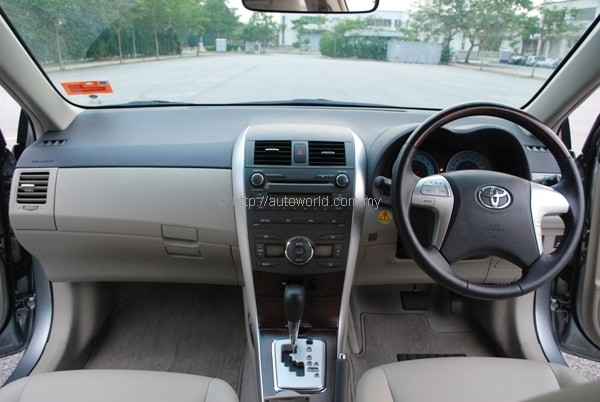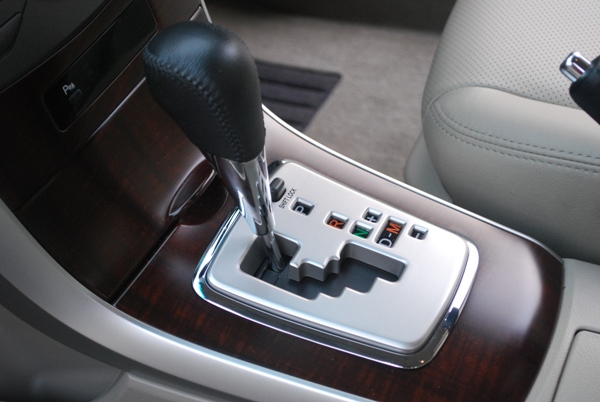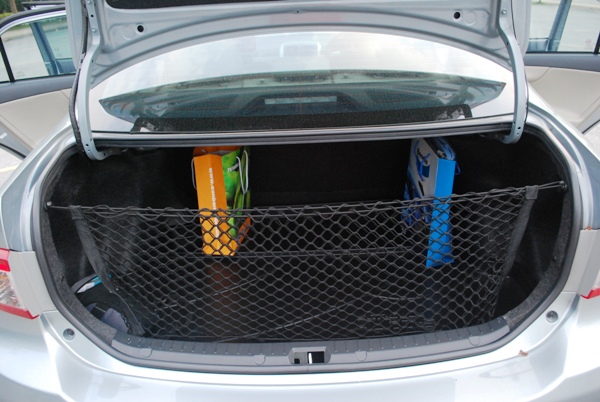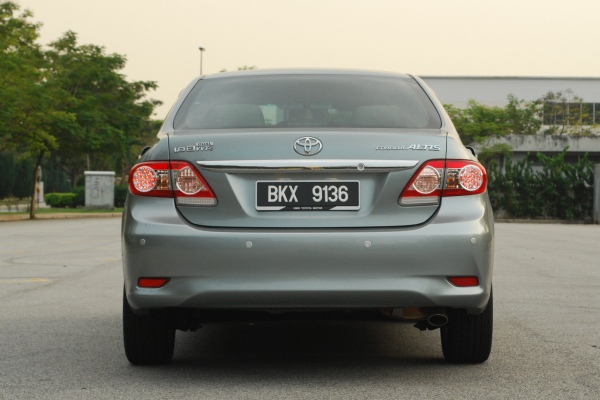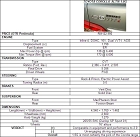Toyota Corolla Altis 1.8G – Middle child holds its own
In any market segment you’d care to look at, the inescapable fact is that cars of that segment are continuously growing in size and engine power. Take the C-segment for example, it wasn’t too long ago that the Toyota Corolla and Honda Civic were running on 1.3 to 1.6-litre engines and were comparable in body sizes to the Proton Wira.
They were even smaller before that, but these days, the Corolla and Civic have grown to the sizes of the Coronas and Accords of yesteryear, whilst new models such as the Vios and City step in to fill the void. With the increasing body sizes came bigger engines. For a while, the market was satisfied with 1.6-litre motors, but the ever increasing demand for power eventually heralded the entry of 1.8-litre engines.
In 2004, the Honda boldly upped the ante with the introduction of a 2.0-litre engine for the Civic, and it didn’t take long for rivals to follow suit. Some markets already have 2.4-litre C-segment vehicles, but in Malaysia, the exponential increase in road tax based on engine capacity has made most manufacturers other than Mitsubishi with the Lancer Sportback reluctant to bring in anything bigger than two litres in this segment.
When Toyota launched the tenth generation Corolla Altis in 2008, they kept the 1.6 and 1.8-litre engines from the outgoing model in service. They also stubbornly refused to offer it with the option of a 2.0-litre model and obdurately insistent on continuing with 4-speed automatic transmissions. Things finally changed with the recent facelift, which came with a complete revision of the powertrain package for the entire line-up.
We have extensively reviewed the 2.0-litre model last year. YS was amongst members of the media invited to a preview drive at the Sepang Circuit before its launch, and we subsequently got our hands on a test unit for evaluation by our CIMB Autoworld Car of the Year Awards 2010 panel of judges. The very same test car returned to us on the second week of November for a test drive review.
As you would expect, having helped to deliver the Best Compact Passenger Car category award to Toyota, the Corolla 2.0V was rather good, and that was reflected in our test drive report published in mid-November. However, at RM131,990 including insurance, it was also not cheap.
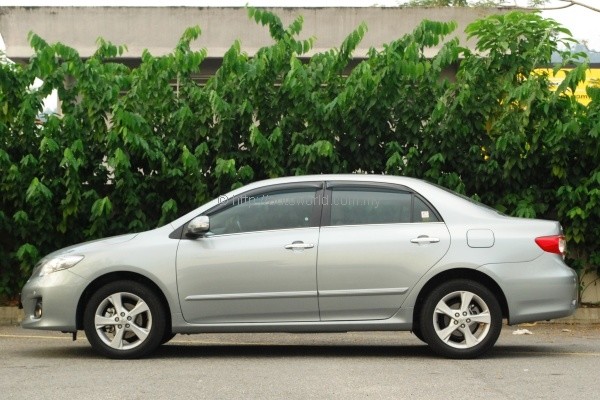 |
| CIMB Autoworld Car of the Year Awards 2010 – Best Passenger Car: Compact |
Majority of orders that UMW Toyota Motor picked up for the Corolla went to the 1.8-litre models, which sit at RM112,990 for the 1.8E or RM122,980 for the 1.8G which we are reviewing here. That RM10k premium charged on the 1.8G buys you extra sprinklings of chrome around the exterior, leather & wood trim, power adjusting driver seat, Optitron meters, and most crucially, stability control (VSC) and traction control (TRC).
 |
| Loses little in equipment to the 2.0V |
Little separates the Corolla 1.8G from the flagship 2.0V. In terms of equipment, the 2.0V adds smoked lights, HIDs, a sportier bumper, auto cruise and a three-spoke flat-bottomed wheel with paddle shifts. In terms of useful stuff, therefore, bulk of the RM9k premium commanded by the 2.0V goes to the engine.
Powering the 1.8-litre Corolla is the 1,798cc 2ZR-FE engine with twin camshafts and Dual VVT-i that produces 138hp @ 6,400rpm and 173Nm @ 4,000rpm. Like the 2.0’s 3ZR-FE, the 1.8 also gets the Acoustic Control Induction System, Toyota’s term for variable air intake manifold. Mated to the engine is Toyota’s Super CVT-i which has seven virtual ratios for manual overriding as per the 2.0.
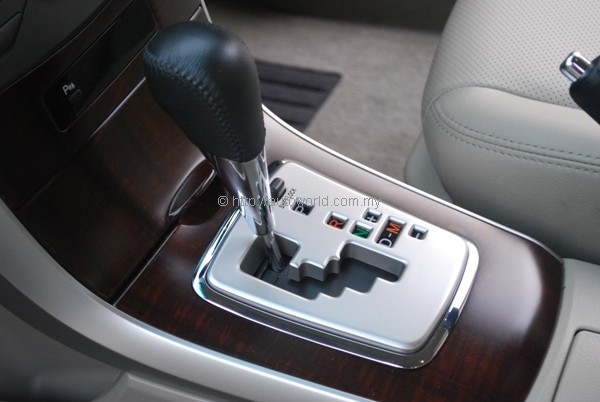 |
| Super CVT-i comes with 7 virtual ratios. |
Five horses and 14Nm separate the 1.8 and 2.0 in terms of output, and if that difference appears minute on paper, it feels marginal in reality. Ten weeks elapsed between our stints in the two variants, and in all honesty, the 1.8 did not feel in any way inferior to what I recall of the 2.0. If anything, the 1.8 seemed to handle slightly better than the 2.0, perhaps due to it having a lighter engine up front.
We are uncertain of any differences in suspension tuning specified for the 1.8 and 2.0-litre Corollas, but if there was, it’s likely to be minimal and more for the purpose of accounting for different engine weights than anything else. Both variants come with the same 205/55 R16 Dunlop SP Sport 01 tyres, exactly the same ones we observed on the Mini JCW. It goes some way to explain the excellent grip levels offered by the Corolla when we pushed it hard at bends.
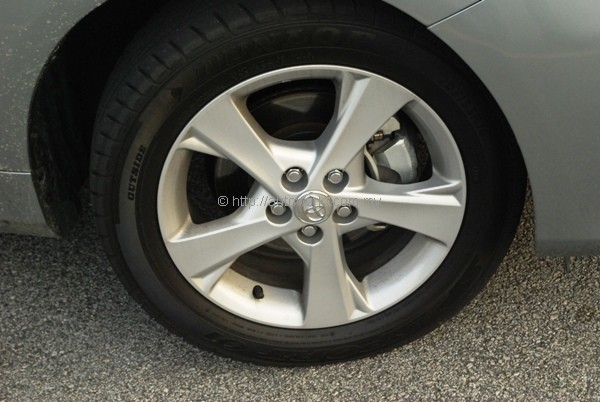 |
| Wheel and tyre combo is identical to 2.0 |
Like its 2.0-litre sibling, the Corolla 1.8 is able to handle the rigours of hard driving well, but a distinct lack of feedback means the experience will always be less interactive than say, the Ford Focus or Proton Inspira. Indeed, the Corolla also lacks that finely tuned balance in ride comfort and handling that the Ford and Proton so effortlessly juggles.
Where the Corolla truly shines however, is when you pack a car load of four or five people for an outstation cruise. The engine and transmission combine well to deliver a very smooth and refined driving experience, and your passengers will have very little in the way of noise interrupting their sleep.
The arrival of a 2.0-litre Corolla is long overdue, but in truth, the 1.8 is more than good enough to meet your needs. The difference in equipment levels between the 1.8G and 2.0V is small enough that we’ll only advise you to go for the bigger model if you really want that extra 5hp. Between the 1.8E and 1.8G however, the choice is yours. Are VSC, TRC and leather seats worth a RM10k premium in your eyes?
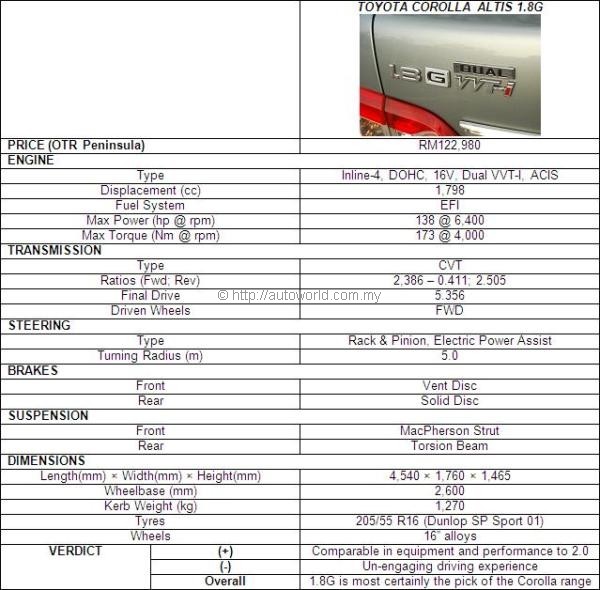 |







